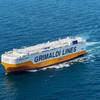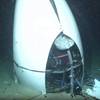On April 11, 2016 the U.S. Coast Guard (USCG) released the revised 2016 National Preparedness for Response Exercise Program (PREP) Guidelines. The new guidelines will become effective on June 10, 2016. Established under the Oil Pollution Act of 1990, the PREP guidelines were developed to provide a mechanism for compliance with the vessel response plan (VRP) drill and exercise requirements. Use of the PREP Guidelines is voluntary, however, compliance with the PREP guidelines will satisfy these requirements.
The 2016 PREP Guidelines apply to all plan holders including tank and non-tank vessels that operate in the U.S. The USCG requires that, within a three-year cycle, all elements of the VRP, including the 15 core components, should be exercised in a drill, or series of drills, involving the vessel Owner/Operator, Qualified Individual (QI), Oil Spill Removal Organizations (OSRO) and Salvage and Marine Firefighting (SMFF) resource providers.
New Requirements
Many existing requirements under the previous PREP Guidelines are either unchanged or have received only minor revisions. There are, however, several new requirements including: remote assessment consultation exercises, shore-based salvage and marine firefighting table top exercises, and equipment deployment for SMFF providers. Existing requirements also include: QI notifications, emergency procedure drills, OSRO equipment deployment, and incident management team table top exercises (IMT TTX). A brief overview of the new requirements is shown to follow:
Remote Assessment and Consultation Exercise with SMFF: The USCG requires an annual exercise for each vessel operating in U.S. waters. Under these new guidelines, the vessel master or designee should exercise VRP notification and activation procedures to communicate an emergency procedures scenario with the contracted SMFF resource provider identified in the plan, and establish a communication process to support the completion of the vessel’s stability and structural integrity assessment.
Shore-Based Salvage and Shore-Based Marine Firefighting Table Top Exercises: The USCG requires an annual exercise for plan holders and the respective management teams, as established in the plan. The USCG stated this requirement should exercise the team’s organization, communication, and decision-making in managing a salvage and a marine firefighting response.
Response Equipment Deployment Exercise – SMFF Providers: The USCG requires an annual exercise for plan holders, to be completed by the contracted SMFF service providers identified in the plan. The USCG stated these exercises should demonstrate the ability of personnel to deploy and operate response equipment, and ensure the equipment is in working order.
Plan Holder-Initiated Unannounced Exercise: The USCG requires plan holders to annually conduct either an emergency procedures exercise with an SMFF component, or the SMFF equipment deployment as an unannounced exercise. This is in addition to the current requirement to annually conduct either the emergency procedures, IMT TTX, or equipment deployment as an unannounced exercise. O’Brien’s recommends that plan holders conduct two of their emergency procedures exercises as unannounced, including one oil spill scenario and one SMFF scenario, to satisfy this requirement.
Government-Initiated Unannounced Exercise (GIUE): While GIUEs are not new to PREP, the USCG recently renewed their emphasis on this program. According to the USCG, the current intent of a GIUE is to test an Average Most Probable Discharge (AMPD) scenario including response equipment deployment for tank vessel operators and facilities. These will be limited to a maximum of four per Captain of the Port Zone (COTP) per year. While the guidance on GIUE implantation originates from USCG Headquarters, each of the 42 COTP’s maintain responsibility for implementing GIUEs in their respective zones. As a result, confusion remains regarding whether the USCG intends to focus GUIEs on tank vessels conducting cargo transfers at facilities or designated lightering areas.
O’Brien’s Approach
As the QI and vessel compliance consultants for a large number of domestic and international shipping companies, we are actively engaged in meetings with OSROs and SMFF providers to identify ways to minimize the impact of the 2016 PREP Guidelines on our clients’ operations. Additionally, we are working with our 24/7 Emergency Operations and Command Center staff to further streamline the exercise process and documentation procedures, and revise vessel response plans to align with and satisfy these new exercise requirements. We understand the added burden new requirements like this place on industry and are committed to identifying solutions with minimal cost and disruption to current operations. To this end, we remain in regular contact with the USCG Office of Marine Environmental Response, which oversees these guidelines, to communicate the impact the 2016 PREP Guidelines will have on industry before they come into force.
The Author
Kate Kelley is the Vessel Services Compliance Manager for O’Brien’s Response Management (ORM), a Witt O’Brien’s company. Prior to joining ORM, Ms. Kelley worked for the Environmental Protection Agency (EPA) as a program lead for the development and implementation of the EPA’s Vessel General Permit (VGP). Ms. Kelley holds and M.S. in Applied Economics from Johns Hopkins University, and a B.A. in Environmental Policy from the University of Michigan.










